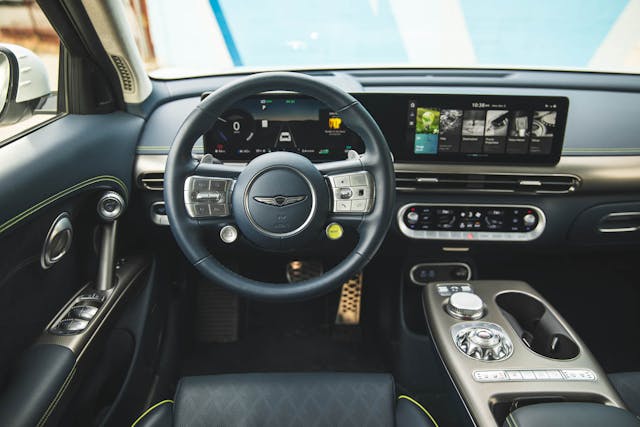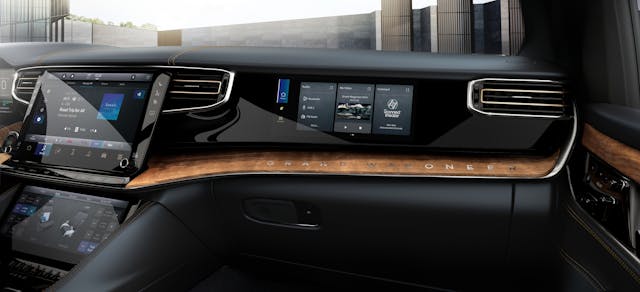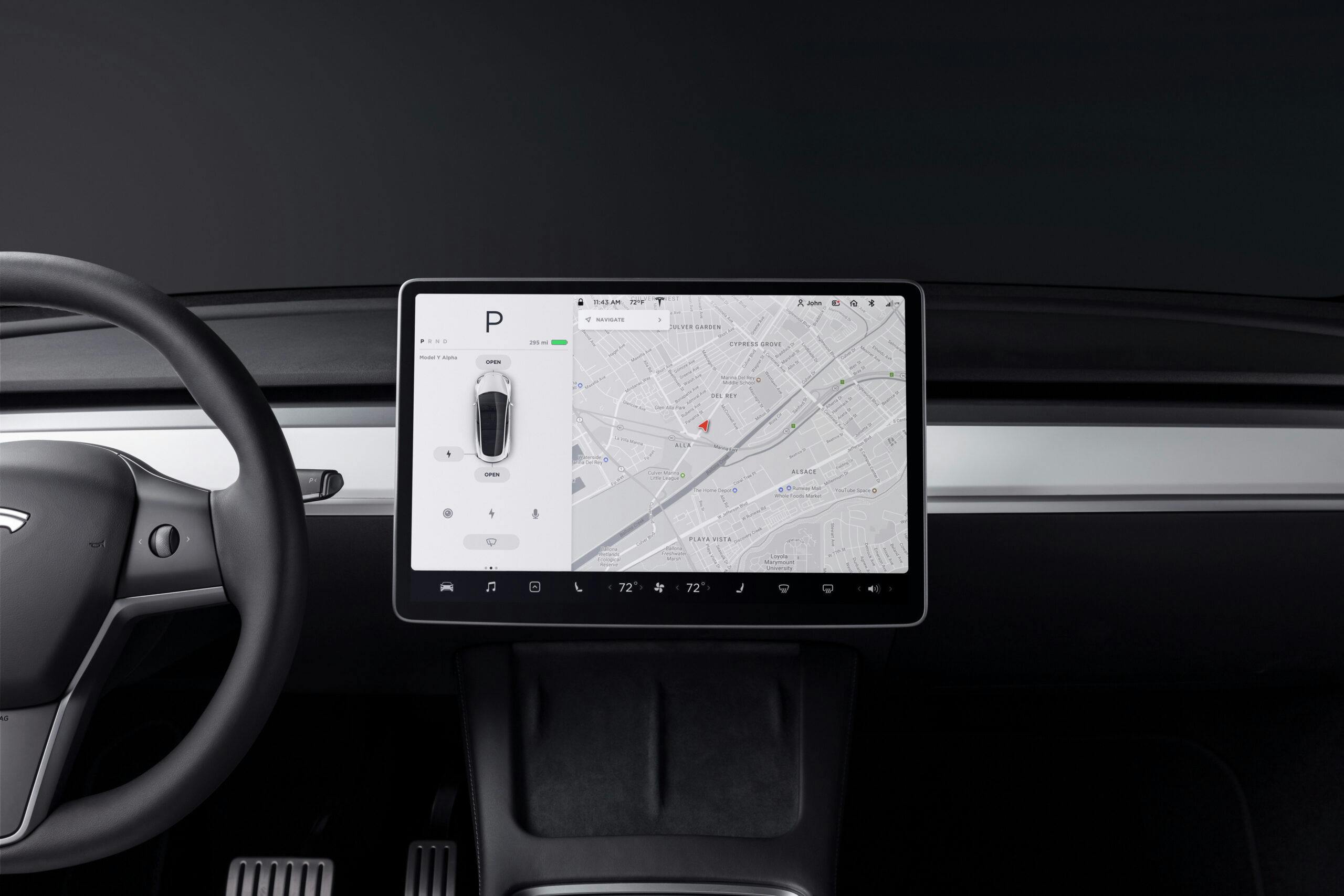Media | Articles
J.D. Power Study Shows New-Car Buyers Are Annoyed by New Tech
J.D. Power’s 2024 U.S. Tech Experience Index (TXI) Study surveyed more than 81,000 new car buyers 90 days after each person took possession of their new ride. The market research company found that plenty of drivers thought at least some of the newest high-tech features in their cars tried to solve problems that didn’t exist or were just poorly implemented. Sounds about right.

“A strong advanced tech strategy is crucial for all vehicle manufacturers, and many innovative technologies are answering customer needs,” said Kathleen Rizk, senior director of user experience benchmarking and technology at J.D. Power. “At the same time, this year’s study makes it clear that owners find some technologies of little use and/or are continually annoying. J.D. Power’s ability to calculate the return on investment for individual technologies is a major step in enabling carmakers to determine the technologies that deserve the most attention while helping them ease escalating costs for new vehicles.”

This study seems to back up what many of us experience when driving modern cars. Functions that used to be simple are buried in a touchscreen menu, beeps and vibrations abound, and screens are everywhere, including ones that cater to the passenger. So much about the cabin seems unnecessary.
The TXI study found that some automakers are doing much better than others—for example, Genesis and Hyundai, who score 584 and 514, respectively, to earn them a place toward the top of J.D. Power’s ranking. However, keep in mind that the maximum possible score is 1000 points. Lexus (535 points) and BMW (528 points) followed just behind Genesis, leading the premium brands, while Kia (499 points) and GMC (439 points) took second and third among mainstream ones. Both Genesis and Hyundai earned praise for their front-cross-traffic warning.
Because of how they permit researchers like J.D. Power to see the data, Tesla, Rivian, and Polestar were not fully ranked, but they each scored much better than average with 786, 666, and 578 points, respectively. However, even Tesla’s seemingly runaway performance shows signs of decline as the brand expands into the mainstream, where it must satisfy customers who aren’t just early adopters.
Marketplace
Buy and sell classics with confidence

As for Polestar’s score, we tend to agree that infotainment systems from this automaker are among the top of those we’ve spent time in. Its Google-based user interface was intuitive and placed information where it was easy to access.
J.D. Power didn’t explain why Nissan (411), Ford (406), Mini (396), and Dodge (392) scored at the bottom, but most brands fell between the 400–450 range.
We hope that manufacturers are listening, as plenty of new tech is useful and can increase the safety of those inside and outside the vehicle, but it takes a deft touch to implement properly. As buyers seem to be increasingly emphasizing infotainment and its interface as deciding factors in new car purchases, competition in that space will only heat up. Brands will have to differentiate themselves while balancing the increasing costs of the new tech. We’re eager to see how things shape up, but we’re also leery. Let us know what you like best—and least—when it comes to new car tech, specifically infotainment systems.







No suprize their.
(I guess I should leave spell-check on…)
😂😂😂
A myriad of questionable features that add to operational complexity and increase the probability of failures. A perfect example is the Jeep Grand Cherokee. In 2020 they implemented their own new software and a new generation of electronics that continues to have high failure rates today. Stories abound such as customers driving away their new one only to have it completely shut down a few miles later, and need a tow and a “software revision”. As a result, many knowledgeable folks seek out 2019’s as the last ones that are reliable. Lest I only pick on them, virtually all the manufacturers follow this same ridiculous path because it adds a couple of point of gross margin to their profitability (at least until the warranty costs come back to bite them).
If I can’t do all the basic functions of my car (tune the radio, operate the HVAC, seats, transmission, and ride modes) blindfolded, the car isn’t functional.
Well, not that I would drive blindfolded, but the only time I ever need take my eyes from the road is when I check my mirrors.
What I don’t understand is the idea that a cell phone is considered distracting (it is, I know) but that having a screen in the middle of the dash is not.
Hear, Hear!
Some are useful sone are not. Then some are not well developed.
Finally they often get out dated long before the car is worn out. Then there is little to no update support.
I just saw someone wanting yo update the GPS on an older car and the newest update is 2016.
Much of this should be done via smart phone and that way everything is updated with your phone. If you don’t have it you won’t miss it.
My newest is a 12, which has a radio with knobs (which I can find and manipulate without taking my eyes off the road) and a plug-in for a USB drive. That is all I need, and if that were available as an option in new cars, I would probably be a lot more interested… until we get to the nanny controls, which tend to be federally mandated. I drive the car, not the car drives the car, so I’ll probably stick to my old stuff
Same here – 100% with ya on your last sentence. My newest (2008) has an outside temp digital readout and a “general” directional heading (N, NW, W, SW, etc.) digital readout and that’s even more tech than I desire, but it came with the rig (and frankly, I even tend to look at it every once in a while, so guess it’s ‘useful’ to me). All gauges and controls are analog and tactile (knobs and switches). It has two 12v power outlets, so plugging in two USB chargers is a snap. I have a smart phone, so if I need to see something on a screen, I can pull over and look it up. In 16 years of driving it all over the country, I have never wished it had any more tech than that.
Some of this stuff has been or is being mandated by the gubmint. For example, that infernal auto-emergency braking system, which I absolutely loathe (I always turn it off), is being mandated by NHTSA as a standard feature on all new cars sold in the US starting in the 2029 MY. Ugh. Hopefully you’ll still be able to defeat it.
Otherwise, blind spot warning is very helpful, lane keeping assist…eh…not so much. I always defeat that, too. In any case, there are too darned many bells, bongs and other warnings going off all at once that simply cause distraction and confusion.
IMO, much of the real-world usefulness of these electronic nannies depend on their level of sensitivity (and whether it can be increased or decreased and/or turned OFF), and how well everything is integrated with the UX/UI of the infotainment system, which in too many modern cars is terrible.
I generally keep my lane warning turned off because of false warnings. I drive a lot of oil and chip backroads which have no lane markings. However, sometimes the system reads wear patterns on the road as lane markings, and constantly tries to warm me that I’ve strayed out of a non-existant lane.
I’ve heard from people developing new tech that making easy to use/ simple isn’t simple at all and quite a challenge. More than one would think. That being said. Going back /keeping the old paper owner manuals in the glove compartment would be appreciated. Having to sit in the car and hunt and peck through the touch screen options becomes old quick. Besides the old manuals are ‘mobile’. You can bring them inside and find what you need while having a tuna fish sandwich and a glass of ice tea instead of trying to find the link in to the app.
I rent a lot of cars and deal with these systems on various brands. ABS and stability were great safety features in their day and still the best by far. Backup camera – awesome. Auto high beam – also awesome. Parking assist – awesome. Lane keeping doesn’t work because it’s just looking at lines on the road so it’s really “white line following” and will annoy you with mistakes, off ramps, construction, etc. Cruise that follows the car in front – some systems work well, others (Toyota) completely suck. Blind spot – don’t mind and can be useful. I just bought a new Subaru and it works pretty well. Unobtrusive. My wife HATES these features and the car has yet to do anything to piss her off. So far.
If a feature that can put torque on the steering wheel or apply the brakes is implemented it needs to work flawlessly 100% of the time – no excuses.
I suspect that these features will make for very poor, disinterested, distracted drivers as time goes on. Is it really that hard to park your own car or keep it between the lines?
I have some understanding as to why Ford was a 406. 😉
I just purchased a new Maverick Hybrid, and every function in the car — seatbelt warning, parking brake, hybrid drive ready, etc — has a dialog box that must be accepted “OK?” before one can see the instrument panel. The vehicle also does not save the last selected drive mode, which in this eco vehicle, means the most frequently used mode ‘Eco’ requires 4 button pushes to engage, which one can only see after one has cleared all of the previously mentioned dialog boxes.
Net/net — after turning the key, one has to acknowledge dialogs or push a button 9 times before one can get underway.
The truck itself is a pleasure — great economy, good ride quality, good interior comfort, excellent handling (by truck standards) — but the electronic implementation is a freaking hot mess of which Ford should be straight up ashamed.
We shall not discuss things like lane keeping assist or ‘auto hold’. No we shall not.
The touch screens are the worse. Please give us knobs back. Ever try driving on NY roads and adjust the heat, radio etc?
The seatbelt warning that never goes off, the auto stop/start engine that needs turned off every time, the needs service message preprogrammed…hate them all.
“Sport Mode” auto trans shift direction gives me fits. Up shifting is now in the former Down shifting direction we 2 pedal cars drivers came to know and love. At least there are 6 gears to practice with and unintentionally red line it at times.
It’s live and learn but I agree the nanny features like auto rumble strips and steering wheel shakers being made standard while making old standard ones like an auto dimming rear view mirror with garage door openers optional, is not a fair trade.
I have found that upshift and downshift directions vary by brand
I think there is a boom for a manufacturer that makes (courage) a transportation machine without all the doo dads and markets it for the driver with safety, durability, quality, low service cost and reliable personal transport. Sure it has to be attractive. That would be a disruption. There are so many “drivers” that want simple when they transport, leave the complexities at work. Huge opportunity. One of the major reasons vintage cars are so much fun and relaxing – just drive and smile. Keep it simple – sign me up.
In surveys like this, it’s important to be able to sort the infotainment tech, the vehicle operating tech, and the safety/efficiency tech. For example, I hear a lot of people griping about auto start/stop features because they don’t like it, not because it doesn’t work or is hard to use. But tech that requires 3 or more actions to perform on a touch screen that used to require only one button or knob is bad tech. That’s the kind of tech automakers should get slammed for.
When will ads show up on the huge screens?